






•
•









Custom:
Outdoor Living Rooms
Patio Covers
Outdoor Kitchens
Screened Porches
Additions
Fire Features

Your new favorite room in the house just might be outside of the house. Whether it’s a screened-in porch like our latest project or a covered patio with protection from the Houston sun, we’re ready to custom-design and build your outdoor space.


while back, I was asking friends who are into commercial shopping centers, about finding tenants who would not be lost due to the new Amazon product expansion.
A few of those perfect tenants are nail salons and dentists. Hard to get Amazon to deliver these services. This is essentially Amazon-proofing your commercial retail property. A tenant that sells something Amazon could eventually offer would not necessarily be a perfect tenant.
Growing up in a relatively small town of maybe 15,000 people, there were mostly locally owned businesses. No large chains had ventured into our small Tennessee town other than a regional upstart called Shoney’s, much like a Sonic concept is today. Lots of people you knew worked there and the owners were franchisees. The behemoth Walmart was just getting started and our first chain called Kmart arrived. Now, independent retailers and locally owned businesses have to deal with Walmart, the Targets and now the uber-efficient Amazon. During the pandemic Amazon had so much business it had to try and corner the market on paper to make all the cardboard it needed for packaging. This can be good for the consumer, but is it really better than going to your local hardware store that may be owned by your neighbor? One of the attractions is local knowledge of what goods and services may work better in your area. Locally owned businesses also provide jobs and pay taxes and buy other goods and services you may offer. This is not a novel idea but one worth revisiting. Why is the Heights one of Houston’s most desirable neighborhoods? I would argue its lack of national chains and locally owned and run businesses that serve its residents.
Now Amazon Web Services (AWS) has “improved your shopping experience by offering the latest AI to help direct your purchases. Thanks, but no thanks, call me old-fashioned but I like to try on and touch my purchases. Most things I buy online are returned. Not so much when I buy local. It’s not likely your online purchases are sourced local from the community. Many of course come from China. There are the jobs delivery offers which are not insignificant. But for me, and I hope for many, buying local is the prudent and responsible way to shop.

Upon receiving her MBA from the University of Florida, Tara began her career in banking and later entrenched herself in the diverse world of logistics and supply chain. With a wide array of marketing and sales roles, she transitioned to pursue where her passion in real estate was true. Tara has had various leadership and management roles, focusing on building relationships, bridges, and alliances. She loves helping people, problem-solving, and finding solutions. Tara’s background and skill set have served her many clients well, and she has flourished in the home market. Let her skills help navigate your real estate needs. In her free time, Tara loves playing and captaining tennis competitively in adult leagues across the U.S. She loves listening to classical music, as she played classical piano for 17 years.






Asia Society Texas Center
Xu Bing: Word Alchemy
Ongoing through Jul 14
Museum Of Fine Arts, Houston
Yayoi Kusama “Aftermath of Obliteration of Eternity
Ongoing
Jacolby Satterwhite; A Metta Prayer
Ongoing through Oct 13
Raqib Shaw: Ballads of East and West
Ongoing through Sep 2
Thomas Demand: The Stutter of History
Ongoing Through Sep 15
Meiji Modern
Opens Jul 7 through Sep 15
Contemporary Arts Museum
Houston
Olivia Erlanger: If Today Were Tomorrow
Ongoing through Oct 27
Amoako Boafo: Soul of Black Folks
Holocaust Museum Houston
Art in War
Ongoing through Aug 25
Facing Survival l David Kassan
Opens Jul 12 through Jan 5, 2025
Menil
Ruth Asawa Through Line
Ongoing through Jul 21
Janet Sobel: All-Over Ongoing through Aug 11
Wall Drawing Series; Marc Baur Ongoing through Aug 18
Abstraction after Modernism: Recent
Artupdate houston published every two weeks by houstonintown. For updates and more go to houstonintown.com and sign up for free updates.



Acquisitions
Ongoing through Aug 25
Foyer installation: On Kawara
Ongoing through Sep 15
Longing Grief and Spirituality: Art Since 1980
Ongoing through Fall 2024

Portraits of Women from the Collection Ongoing through Nov 10
Houston Museum Of Natural Science
Permanent Matter and Motion Everyday Faberge The World Around Us
Special Exhibitions
Death By Natural Causes Ongoing
Sharks! The Meg, The Monsters, The Myths Ongoing
MUSIC & DANCE
For updates go to www.houstonintown.com
ALLEY Theatre
AGATHA CHRISTIE’S AND THEN THERE WERE NONE
JUL 19 through Aug 25
Broadway Across America Hobby Center
Disney’s The Lion King
July 11 through Aug 4
Funny Girl
Aug 20 through 25
STAGES REPERTORY THEATER
Miss Rhythm - The Legend of Ruth Brown
Aug 9 through Aug 13
SPORTS
Baseball
Houston Astros
Minute Maid Park
July
9-11 Miami
12-14 Texas
26-28 L A Dodgers
29-31 Pittsburgh
Aug
2-4 Tampa Bay
16-18 Chicago
19-21 Boston
29-31 Kansas City
Houston Dynamo
Shell Energy Field
July
7 L A Football Club
13 Minnesota United FC 27 Club Atlas
Aug
5 Real Salt Lake 24 Toronto FC



Honorary


This column usually covers the cultural schedules of the three major classical music organizations in Houston - the Houston Symphony, Houston Grand Opera and Houston Ballet. For this issue and at times in the future, I want to additionally present information on classical music opportunities for our readers other than the “Big Three.”
Let’s begin with information of the Houston Civic Symphony.
HCS was formed 57 years ago in 1967. A group of musicians ran an advertisement in one of the Houston newspapers stating that they wanted to form a volunteer symphony orchestra. They received numerous responses from musicians in the area and the Houston Civic Symphony Orchestra was formed as a Texas not-for-profit corporation.
The HCS by-laws’ mission statement reads, “to create and maintain a non-profit orchestra dedicated to the performance of music, to provide the public with good live music, to offer qualified instrumentalists of the community an opportunity to play fine symphonic music, and to encourage and educate talented individuals to appear as vocal, instrumental, and choreographic soloists.” In my opinion, the organization has lived

up to its mission statement.
HCS performs 5 to 6 concerts per season in various local venues. These include Houston Christian University (formerly Houston Baptist University), the Moores Opera House at the Moores School of Music at the University of Houston, St Martin’s Episcopal Church, and Sugar Land Baptist Church.
The orchestra has nearly 100 volunteer musicians from various walks of life. There are a large number of educators - high school, middle school and elementary school orchestral and band directors, even university professors. Also there are several attorneys (including a Texas Supreme Court Justice) and accountants as well as IT professionals,
real estate agents, oil and gas engineers and financial planners.
HCS is led by a very active Board of Directors - attorney Al Thomas, President (since 2006), Ken Henderson, Vice President, who is Director of Bands at Alief Middle School, Duncan Monsurud, Treasurer, who has many years experience in several orchestras and works as a co-op owner of Electric Violin Shop, Matthew Chan, Secretary, violinist, along with Monica Hanna, and Martin Kastenbaum, both violinists.
Brian Runnels has served as Music Director and Conductor of the Houston Civic Symphony since 2006. He first conducted the Houston Civic Symphony in 1979 when he served as Apprentice Conductor with the orchestra under Robert Linder. Since that time, he has conducted orchestras, musical theater, oratorio, and opera in Missouri, Kansas, Minnesota, and Kentucky. After earning a degree in music education at Houston Baptist University he went on to earn a masters degree in church music and choral conducting at Southwestern Baptist Theological Seminary and the Doctor of Musical Arts degree in orchestra conducting from the University of Missouri-Kansas City. He has had additional

conducting training at the Mozarteum in Salzburg, Austria and in the United States with Max Rudolf and Herbert Blomstedt.
Michael Alan Isadore, Associate Conductor, came to Houston after graduating with Masters Degrees in conducting and clarinet performance from the University of Missouri, Kansas City, Conservatory of Music. Since moving to Houston, Isadore has built an important career teaching and conducting while maintaining his recognized performance ability on the clarinet. As a conductor, Isadore was appointed the Associate Conductor of the Houston Civic Symphony starting with the 2007 season, was guest conductor of the Brazosport Symphony Orchestra in 2003, The Houston Civic Symphony in 2004 and the Houston Sinfonietta on two occasions in 2004 and 2005. Recently, Isadore joined the staff of the Houston Youth Symphony as one of their conductors. Isadore has been director of the Dulles High School Orchestra since 1999. Under his leadership, the Dulles Orchestra was chosen to play at the Midwest Convention in Chicago in December 2004 and was chosen as the Runner up for TMEA Honor Orchestra in 2005.
The Houston Civic Symphony has, since its beginning, provided our community with some very serious music concerts on its yearly schedule.
Here is its schedule for 2024-2025:
• Daniel Zajicek - Overture to The Pit
- PREMIERE PERFORMANCE
• Aaron Copland - Lincoln Portrait, Johannes Brahms - Symphony no. 4 in E minor, op. 98
• Additional work - TBD
Friday, September 27, 2024, 7:30pm, Houston Christian University, Dunham Theater, Morris Cultural Arts Center, 7502 Fondren, 77074
• Samuel Barber - Medea’s Meditation and Dance of Vengeance
• Lili Boulanger - D’un Matin de Printemps, Antonin Dvorak - Symphony no. 6 in D major, op. 60
Thursday, November 7, 2024, 7:30pm, Houston Christian University
• Christmas Concert with Houston Christian University Choirs - Program TBA
Friday, December 6, 2024, Houston Christian University
• J. S. Bach - Orchestral Suite no. 4 in D major, BWV 1069
• Georges Bizet - Symphony no. 1 in C major
• Ottorino Respighi - Pines of Rome
Friday, January 24, 2025, 7:00pm, St Martin’s Episcopal Church, 717 Sage Road, Houston, 77056
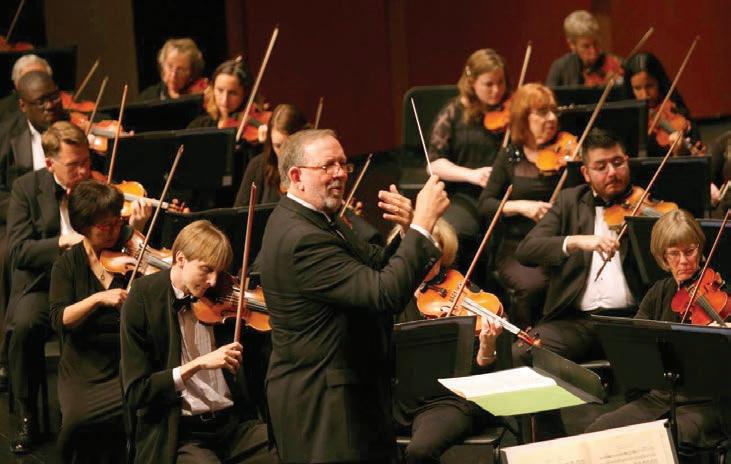

• Shostakovich - Symphony no. 1 2025 Young Artist Competition Winners
• Additional works TBA Friday, March 7, 2025, 7:30pm, Houston Christian University
• Ralph Vaughan Williams - Dona Nobis Pacem
• Johannes Brahms - Schicksalslied, op. 54
• Additional work - TBD
With choirs from Houston Christian University and the Houston Choral Society
Friday, May 2, 2025, 7:39pm, Houston Christian University
Finally, here is a bit of information that should please everyone. I asked the HSC President, Al Thomas, about ticket prices. He responded, “All of our concerts are free. Show up, pick your favorite seat, and enjoy!”
I will be back with the next issue highlighting the 2024-2025 classical music events of the “Big Three”.
Let me continue to hear from youclassicalmusicberquist@gmail.com








The ‘Granddaddy’ of them all: more than 106 years old!

by Marene Gustin
Some favorite eateries never made it through COVID, struggling to switch to take-out only during the lock-down, and then facing supply line shortages and rising inflation. At the beginning of this year almost 20 eateries and coffee shops closed their doors including such popular ones as Harold’s in the Heights, Urban Eats, Alice Blue, and Sushi King. But as many close, and new ones spring up, there are some that seem to have real staying power.
Kata Robata Sushi + Grill
3600 Kirby Dr. Suite H
713.526.8858
katarobata.com
Chef Manabu “Hori” Horiuchi’s premiere Japanese spot just catty-cornered from the shuttered Sushi King, just celebrated its 15th anniversary, and is still going strong. The four-times James Beard nominated chef is known for his sushi creations mad from seafood flown in from Japan several times a week, as well as his creative takes on ramen, miso lobster mac n’ cheese, and grilled meats. More than just excellent food, Chef “Hori” Chef Hori has fostered a community of Japanese culture enthusiasts and provided a nurturing environment

for his dedicated team members, many of whom have been with him since the beginning.


Ragin’ Cajun
4302 Richmond Ave.
713.623.6321
ragin-cajun.com
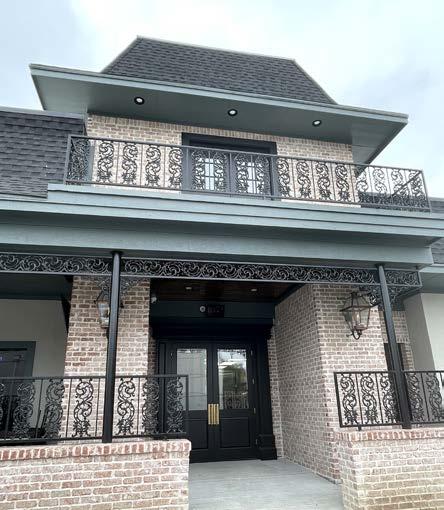
And over at mudbug central, the original Ragin’ Cajun turns the big five-o this year. While the po-boy sandwiches are still a big draw, when it’s crawfish season people flock here for the buckets of bugs boiled in a secret spiced liquid, something they’ve been doing since 1976. You can also get snow crab legs (two pounds w worth) boiled in the same delicious brew along with corn and red potatoes. New location: Spring Branch 1725 Wirt Rd. 713-832-1399
Pico’s
3601 Kirby Dr.
832.831.9940
picos.net
Celebrating 35 years, Arnaldo Richard’s Pico’s has been consistent in serving up the flavors of the seven regions of Mexico along with some really big margaritas. The restaurant is also known for its moles and ceviches, as well as Pico’s famous Chile En Nogada, a roasted poblano pepper stuffed with pulled port in a peanut sauce with green olives, almonds and fruit covered in creamy walnut sauce topped with pomegranate seeds. The wonderful ambiance and service keep customers coming back as do the parking lot parties for Cinco de Mayo and Derby Day.



Backstreet
1103 S. Shepherd Dr.
713.521.2239
backstreetcafe.net

H Town Restaurant Groups’ chef Hugo Ortega and wife Tracy Vaught have a half dozen popular eateries, but it all started with Backstreet Cafe more than 40 years ago. Nestled in a quaint 30’s-era home in River Oaks, Backstreet Cafe has fed generations of eaters craving quality Southern, Cajun, and Creole flavors. Think roasted oysters, fried green tomatoes, and their famous red corn chicken enchiladas. Come for the live jazz at Sunday brunch and enjoy one of the finest restaurant patios in town.

Then there are some really senior eateries. The legendary Tony’s turns 60 next year, while Houston’s oldest Tex-Mex spot, Molina’s Cantina is an octogenarian. But the granddaddy of them all is Christie’s Seafood and Steaks at more than 106 years old. Or, as they say, since before you were born.
Jonathan Horowitz, president of the Houston Hospitality Alliance (formerly the Greater Houston Convention & Visitors Bureau) says currently the cost of doing business is putting pressure on the industry from both ends.
“First the food, staff, and rent costs

Octogenarian Molina’s
are increasing,” he says, “and then customers are also feeling the pinch and are demanding more for their money.
“When I think about the restaurants that have stood the test of time I think about two things. One, is consistency. Customers know what they will get when they go there. Why do I keep going back to the same five restaurants? Because I know I’ll get great food and service. Every time. The second thing is you have to have a niche. Whether you’re the neighborhood hangout or the special occasion place, you need to find a specific role that needs filling and fill it. And then you have to be consistent about fill-
ing that niche. In Houston where there’s a new flashy restaurant opening every five minutes, you need to give your customers a reason to keep coming back.”
And going back to Kata Robata, Chef “Hori” agrees.
“There are many factors that contribute to our longevity, but the most important is our consistency, constant drive for perfection, incredible staff and listening to our guests. We never rest on our laurels and are as hungry today to make a great restaurant, as we were when we opened. We are always looking to evolve and stay relevant, we know no matter how much success we have had, the future is never guaranteed, and we approach each day and service as if it is the most important one yet. This type of dedication to one’s work and craft is very common in Japanese culture and a big part of my culinary and business philosophy. Work hard, always do your best, stay humble, always look to learn and get better, appreciate your staff and show thanks to your guests.”



David Michael Young Broker Associate, CLHMS, CNE, GREEN Compass RE Texas (713) 320-6453 www.youngrealtyhouston.com


Jenny Wang CLHMS, CRS Broker Owner of JWang Properties 281-451-0185 www.jwang.live



14236 Kellywood Ln | Memorial West
List Price $992,000 | MLS# 85967093
Beautifully remodeled by award-winning designer. 2 story, 4/2.5 home zoned to great Spring Branch ISD schools in Memorial West/Energy Corridor. Enterprise class wifi in home. Walk to neighborhood tennis court, pool & clubhouse. Close to great shopping, dining and Terry Hershey Park.. David M Young | Compass | 713-320-6453

Beverly Smith CLHMS Lake Conroe Specialist Coldwell Banker Realty (713) 569-2113 www.lakeconroebeverlysmith.com



990 Bentwater Dr | Montgomery, TX List Price $785,000 | MLS # 77657245| MLS# A stunning residential gem nestled in the exclusive gated community of Bentwater Yacht & Country Club. As you step into the home, you're greeted by an oversized living room that radiates warmth and comfort, making it the perfect space for entertaining or simply relaxing with the family. Beverly Smith | Coldwell Banker Realty | 713-569-2113



12503 Vindon Drive | Memorial Meadows
List Price $2,150,000 | MLS# 50283691
Situated on a corner lot in coveted Memorial Meadows, this custom-built new construction is a testament to award-winning craftsmanship and luxury. Designed for entertaining and comfortable living, it boasts generous open living spaces, a private Study, Media Room, and Game Room.
Michelle Hinton | Compass | 832-795-2246


2611 Newman St | Upper Kirby
List Price
$775,000 | MLS# 74255408
Tastefully updated townhome in heart of Upper Kirby with 3 large bedrooms, 3/1 large baths and huge closets. Located on a horseshoe street with no thru traffic, West Court has a true neighborhood feel and is close to high-end shops and restaurants. Open floorplan with lots of natural light. Oak hardwood floor and tile throughout - no carpet!
David M Young | Compass | 713-320-6453

Mariana Saldana Broker Associate Keller Williams Realty Metropolitan (832) 338-4040 www.uptownrealestategroup.com


Genevieve Rowland REALTOR, MCNE, CLHMS Multimillion Dollar Producer, ILHM Keller Williams Memorial (281) 904-7014 www.rowland-properties.com


Michelle Hinton Broker Associate ABR, CIPS, CLHMS, GRI, CRS, MCNE, SRS Compass Real Estate (832) 795-2246 hintonhometeam.com



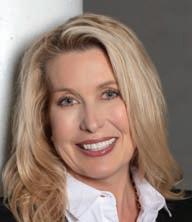
Stacy Wood Broker Associate
Compass Realty Estate | Stacy Wood (713) 504-2059 www.StacyWood.com


Gary Ismail Broker/Owner, CLHMS, CNE
Global Luxury Home Specialist
Certified Negotiation Expert
Gary Ismail Fine Properties (832) 489-GARY www.garyismail.com


Melonee Piperi
Broker Associate CRP, CNE, CLHMS
Moving Houston Team
Keller Williams Realty (713) 705-6029 www.movinghouston.com




739 Azaleadell Dr | Garden Oaks Plaza
List Price $2,049,000 | MLS# 36028929
A true masterpiece situated on almost a quarter acre completed in 2022. Open floor plan 5 Bedroom/4 Bath home fulfills every buyer's desire. The 2-car garage features 12-foot ceilings, making adding a car lift an easy option. The grand foyer showcases soaring ceilings and exquisite lighting.
Stacy Wood | Compass | 713-504-2059


115 Paul Revere Drive | Bunker Hill Woods
This 5-bedroom custom residence, designed by award-winning firm, The Bell Design Group, in collaboration with boutique architect Weidner Hasou, features soaring ceilings and walls of windows. Tucked in an idyllic location on a sprawling 25,000+ SqFt lot at the end of a private wooded street, the surrounding area is characterized by its tranquil ambiance.
Michelle Hinton | Compass | 832-795-2246
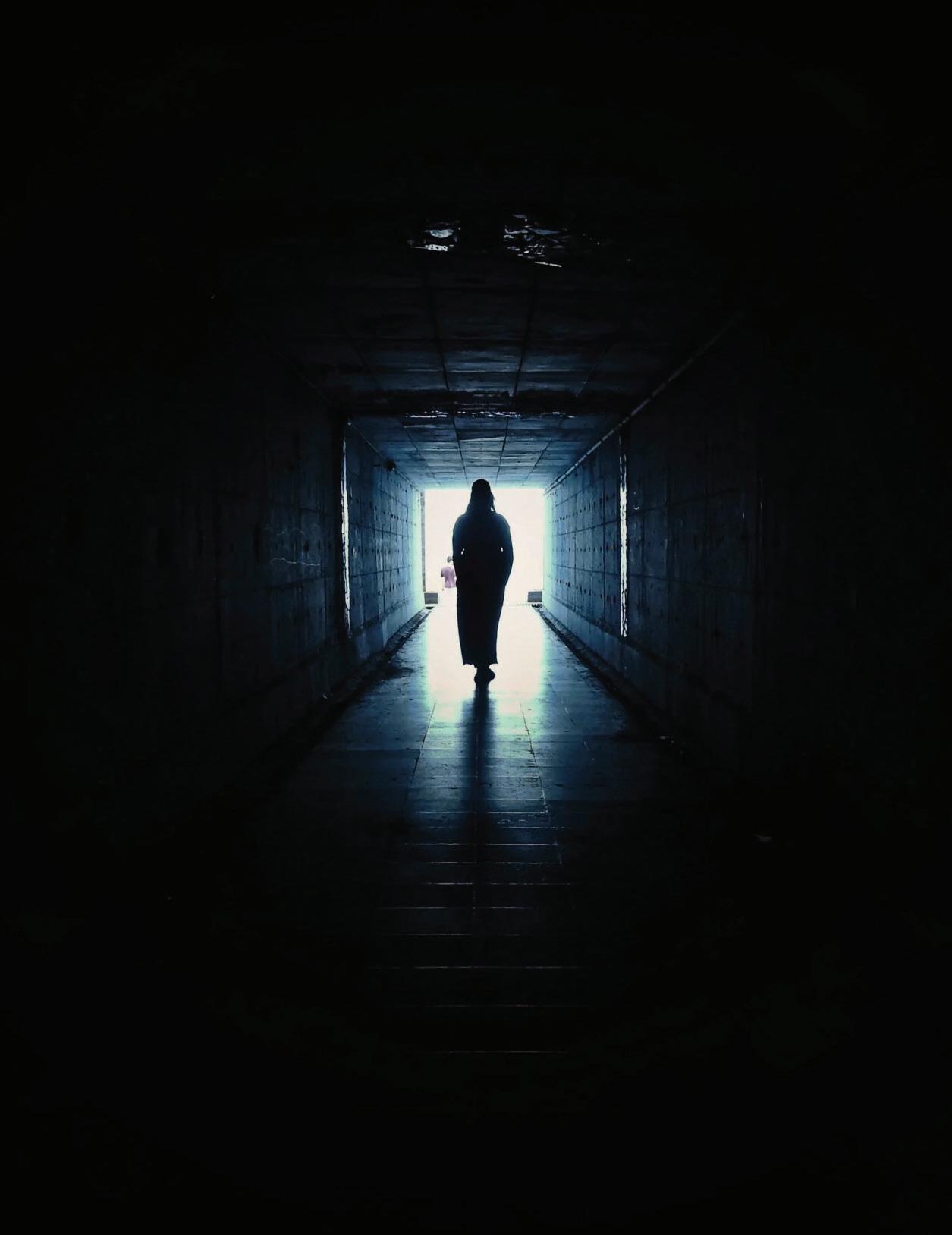
Women aren’t talking about their sexual assaults. Why aren’t we talking about that?
Photo by Paula N. Luu
by CHRIS CANDER

Iwas 19 and attending a Spanish study abroad program in Madrid through the University of Houston, when a stranger approached. I’d been at a restaurant with a large group of friends and acquaintances whining about not being able to call my boyfriend back in Texas, when this young man I hadn’t noticed before leaned toward me.
“I know where you can make a phone call,” he said in Spanish-accented English. His voice was smooth and warm. I didn’t hesitate before gratefully accepting his offer and following him outside. Moments later, as he was driving us too fast and too far out of the city, I knew I’d made a terrible, terrible mistake.
When he finally stopped the car, he put a knife to my throat. He spat hideous words in my ear, detailing how he planned to kill and rape me—in that order. What happened next was a blur fueled by my determination not to die. I kicked, slapped, hit, screamed. Somehow, I got away.
Afterward, I blamed myself for being so stupid, for ignoring my instincts, for putting myself in such a situation. I didn’t know his name. I couldn’t identify his car. I thought, what good would it do to call the police?
Turns out my seemingly strange reaction is common; in the United States,
nearly 80 percent of sexual assaults are never reported.
WHY DO VICTIMS OF NONSEXUAL VIOLENT CRIMES USUALLY INVOLVE AUTHORITIES WHILE MOST RAPE SURVIVORS REMAIN SILENT?
I’m grown now, a novelist and mother of a 21-year-old daughter and an 18-year-old son. The fact that my children are close to the age I was when I was attacked has made me hyper-vigilant of their safety. That they are young adults in Texas has made me hyper-aware of at-
tacks on their rights, especially after the U.S. Supreme Court overturned Roe v. Wade.
I was utterly appalled when I read research in the Journal of the American Medical Association regarding the number of rape-related pregnancies in the 14 U.S. states with total abortion bans. Since those bans took effect, it’s estimated that more than half a million rapes occurred in those states, yielding almost 65,000 pregnancies.
In Texas alone, the study estimates that roughly 212,000 rapes led to 26,000 pregnancies.
Based on the aforementioned sta-

tistic about silence, most of those rapes were never reported. That means, horrifyingly, about 410,785 rapists nationwide got away with their crimes and carried their lives unpunished. Their victims, I’m certain, did not. And I understand why many don’t speak out.
The only person I told about my attack was a friend I’d been with earlier that night. After I’d hitched back to the city, many hours later with a torn shirt, bloodied arms, and a shattered spirit, she said we had to go to the authorities.
I knew I would never forget the feeling of that knife at my throat, but I refused to tell anyone else. Not the police, not the school, not my mother. Nobody. I just wanted to forget about it. Although I escaped with only minor physical injuries, the psychic wounds have endured more than three decades—in part because I tried to pretend nothing had happened.
According to researcher Sandra Caron, one-third of college women who experience sexual assault tell no one, not even one friend. By comparison, a 2022 Bureau of Justice Statistics victimization survey estimated that 64 percent of robberies and 81 percent of cases of vehicle theft were reported to police.
Why do victims of nonsexual violent crimes usually involve authorities
while most rape survivors remain silent? Caron says most survivors, as I did, blame themselves. Or they feel society will blame them.
Remember then-20-year-old swimmer Brock Allen Turner who was convicted of rape in 2016 after publicly assaulting a woman on the Stanford University campus? His father objected to the proposed six-year sentence, calling it “a steep price to pay for 20 minutes of action out of his 20 plus years of life.”
As a parent, I can perhaps understand—but not excuse—a parent saying something so reprehensible in defense of their child. But what about the judge? Aaron Persky sentenced Turner to only six months, saying, “A prison sentence would have a severe impact.” The judge was more concerned about the perpetrator’s future than the survivor’s.
Such decisions reinforce survivors’ fears about how they will be treated if and when they come forward.
In her testimony, Turner’s victim described the harrowing effects of the attack, and its aftermath. “If you think I was spared, came out unscathed, that today I ride off into the sunset while you suffer the greatest blow, you are mistaken,” she wrote. “Nobody wins.”
Fear of being held responsible for
their rape. Fear of losing control of the situation. Fear of not being believed. Fear of getting in trouble. Fear of being labeled. Fear of being abused again. Fear of losing someone. (Yet another grim statistic: Over 90 percent of juvenile victims know the perpetrator.) To many, involving authorities feels like being assaulted twice.
The #MeToo movement that began in 2017 shifted public discourse, at least for a while, and in a recall election, Judge Persky was removed from the bench.
Organizations such as the Rape, Abuse and Incest National Network and the Houston Area Women’s Center support survivors. But there is still a long way to go to enable more victims to break their silence.
Post-Madrid, I thought I’d successfully hidden the truth from myself, but something as traumatic as that doesn’t magically disappear. It’s the kind of story that lives deep inside your bones.
I turned to athletics to regain a sense of power and safety, specifically competitive bodybuilding and martial arts. Eventually, I began teaching self-defense classes to women and girls, sharing an abbreviated version of my assault. For my students, it’s a useful scaffolding, explaining how violent attacks unfold. For me, it’s made that awful night easier to
talk about. Still, until 2021, I hadn’t told anyone the full story.
That year, my 19-year-old daughter was preparing to drive cross-country from her college campus to spend the summer in Texas. I thought about how strong and capable, and yet how vulnerable and exposed, she would be during her trip. I couldn’t stop thinking about the vagaries of violence and victimhood, safety and security, guilt and grief. At that point, she knew some of what had happened to me, but I felt I had to tell her all of it.
Afterward, I decided to deal with the suppressed details of my attack in the most therapeutic way I know: by fictionalizing it. Writing The Young of Other Animals, the book that grew out of this story, helped me let go of the selfblame and shame I’d been carrying.
I wonder whether that healing would’ve started 30 years ago, if I’d talked about it then. And I wonder if I might’ve prevented my assailant from hurting someone else if I’d told police. I’ll never know.

But I do know now that remaining silent doesn’t solve anything.
Half a million rapes in 14 states is too many. More than 212,000 rapes in Texas is too many. Any is too many. At the very least, we must try to make it easier and safer for survivors of sexual violence to come forward, seek help, and begin to heal.
A version of this story ran in the May / June 2024 issue of the Texas Observer. https://www.texasobserver.org/syndication/

CHRIS CANDER is the USA Today bestselling author of the novels The Young of Other Animals, A Gracious Neighbor, The Weight of a Piano, Whisper Hollow, and 11 Stories, and the children’s picture book The Word Burglar. A former firefighter, Cander holds a fourth dan in tae kwon do and is a certified women’s defensive tactics instructor. She lives in Houston.





The foster care system in Texas has long been under scrutiny. From reports of inadequate care to high caseworker turnover, the state-run system has faced numerous challenges. In an attempt to address these issues, Texas has moved towards privatizing its foster care system through a model known as Community-Based Care (CBC). While the goal is to improve outcomes by involving private organizations, this shift has revealed significant pitfalls. This article delves into the critical issues surrounding the privatization of foster care in Texas, highlighting both the promises and the perils.
The privatization model in Texas, known as Community-Based Care (CBC), decentralizes foster care services, transferring responsibilities to private, non-profit organizations across different regions. These organizations manage all aspects of foster care, including case management, placement services, and support for biological families. The underlying assumption is that these entities, driven by performance-based contracts, would bring innovation, accountability, and better outcomes for children.

The Goals of Community-Based Care Community-Based Care aims to address several core goals, with performance measures tied to each:
1. Safety of children in placement.
2. Placement of children in each child’s home community.
3. Provision of services in the least restrictive environment.
4. Minimal placement changes for children.
5. Maintenance of contact between children and their families and other important persons.
6. Placement of children with siblings.
7. Provision of services that respect each child’s culture.
8. Preparation of children and youth in care for adulthood.
9. Provision of opportunities, experiences, and activities for children in care that are available to kids not in care.
10. Participation by children and youth in making decisions about their own lives.
11. Reunification of children with biological parents when possible.
12. Promotion of placement of children with a relative or kin if reunification is not possible.
Promises and Potential
Proponents of privatization argue that private agencies, unencumbered by bureaucratic inertia, can provide more responsive and flexible services. They cite several potential advantages:
1. Efficiency and Flexibility: Private organizations can adapt more quickly to changing needs and circumstances, potentially reducing delays in service provision.
2. Innovation: With the freedom to implement new practices and approaches, private agencies might introduce more effective models of care and support.
3. Accountability: Performance-based contracts are designed to hold private agencies accountable for outcomes, theoretically ensuring higher standards of care.
4. Resource Mobilization: Private organizations can tap into a broader range of resources, including philanthropic funding and community partnerships, to enhance their services.

Despite these potential benefits, the privatization of foster care in Texas has revealed several significant pitfalls. These challenges underscore the complexity of child welfare systems and the difficulty of translating market principles into effective social services.
One of the most glaring issues has been the inconsistent quality of care provided by private agencies. Reports of children experiencing neglect, inadequate supervision, and poor living conditions have surfaced, raising serious concerns about the ability of private agencies to safeguard vulnerable children. The disparity in service quality often stems from differences in organizational capacity, experience, and resources. Smaller or less experienced agencies may lack the infrastructure and expertise needed to manage complex cases effectively.
Although many organizations involved in Texas’s CBC model are non-profits, they still operate under financial constraints and performance-based contracts, which can create pressures to prioritize cost savings over comprehensive care. For-profit entities, where involved, face even greater scrutiny. The pursuit of profitability can lead to cost-cutting measures that directly impact the quality of care, such as reducing staff, limiting services, or choosing less expensive but potentially less suitable placements for children.
Ensuring accountability and effective oversight in a privatized system is inherently challenging. The decentralized nature of CBC means that oversight responsibilities are distributed across multiple entities, making it difficult to maintain consistent standards and practices. The performance metrics used to evaluate private agencies often fail to capture the nuanced realities of child welfare. Quantitative measures such as placement stability or reunification rates, while important, do not fully reflect the quality of relationships,
emotional well-being, or long-term outcomes for children.
The transition to privatization has exacerbated workforce challenges within the foster care system. Caseworkers, whether employed by the state or private agencies, face high levels of stress, burnout, and turnover. Privatization can complicate these issues by introducing new administrative and logistical hurdles, such as changes in management practices, increased paperwork, and shifts in organizational culture. These workforce challenges have a direct impact on the quality of care. High turnover rates disrupt continuity of care, making it harder for children to form stable, trusting relationships with their caseworkers.
Privatization can also exacerbate issues of equity and access within the foster care system. Private agencies, driven by performance targets and financial considerations, may be less willing or able to serve high-needs children, such as those with severe behavioral or mental health issues. This can lead to a situation where the most vulnerable children are left with fewer options and less support. Moreover, regional disparities in resources and capacity mean that children in rural or underserved areas may not receive the same level of care as those in more affluent regions. This geographic inequity is a significant concern in a state as large and diverse as Texas.
Texas is divided into 17 DFPS regions, each designed to manage approximately 500 children entering care each year. However, this division has led to significant regional disparities in resource allocation and service availability. For instance, 47% of residential treatment center beds are located in Region 6, the Houston region, leaving other regions underserved.
Consequently, around 60% of children in foster care are currently placed outside of their county of origin, and about 22% are placed outside their DFPS region, sometimes several hun-
dred miles from their homes. This geographic displacement can further disrupt children’s lives and hinder their ability to maintain important familial and social connections.
The CBC model aims to mitigate these issues by keeping children within a 50-mile radius of their homes. Incentives are offered to placement agencies to encourage local placements, although the specific incentives have not been clearly defined in public documentation. Under the CBC structure, the state must find businesses and non-profits willing to open more emergency shelters and residential treatment facilities in various regions and counties to reduce the need for distant placements.
The current pay structure in foster care does not adequately promote well-being or healing. In contrast, the CBC model incentivizes placements into therapeutic foster homes instead of residential treatment or psychiatric fa-

cilities. This shift aims to provide more personalized and less restrictive care environments, aligning with the goal of placing children in the least restrictive setting appropriate for their needs.
One of the significant changes under CBC is the implementation of a performance-based system. Currently, there are no metrics to determine the outcome
of the child or family progress in the privatized system. However, CBC systems will introduce performance measures with financial incentives tied to achieving specific goals, such as:
• Safety of children in placement
• Placement within the child’s home community
• Minimal placement changes
• Maintenance of contact with family and important persons
We are committed to meeting our customer’s needs in an honest, reliable and personal manner. Your high standard is our commitment.


Custom made shirts in our shop. Ask about our frequent buyers program.
• Sibling placements
• Culturally respectful services
• Preparation for adulthood
• Equal opportunities and experiences
• Child and youth participation in decision-making
• Reunification with biological parents when possible
• Placement with relatives or kin if reunification is not possible
The Phased Implementation
The implementation of CBC is phased, with each stage expanding the responsibilities of private contractors. In Stage 1, contractors provide foster care placement services, preparation for adult living, day care, and adoption services. They share case coordination with CPS but do not provide kinship placements.
In Stage 2, which Tarrant County entered in September 2023, the Single Source Continuum Contractor (SSCC) assumes full responsibility for case management, including kinship services and reunification efforts, while CPS shifts to an oversight role. Stage 3 introduces financial incentives and penalties based on the contractor’s ability to achieve permanency outcomes for children in foster care. Moving Forward: Balancing Public and Private Roles
The experience of privatizing foster care in Texas highlights the need for a balanced approach that leverages the strengths of both public and private sectors while mitigating their respective weaknesses. Several key strategies can help achieve this balance:
1. Strengthening Oversight and Accountability: Robust oversight mechanisms are essential to ensure that private agencies adhere to high standards of care. This includes comprehensive performance metrics and regular, independent audits.
2. Supporting the Workforce: Investing in the workforce is critical to improving the quality of care. This includes providing adequate training, support, and compensation for caseworkers.
3. Ensuring Equity and Access: Policymakers must ensure that all children, regardless of geographic location or level
of need, have access to high-quality care.
4. Promoting Collaboration: Fostering collaboration between public and private entities can help leverage the strengths of both sectors.
5. Engaging Communities: Community involvement is crucial. Private agencies should actively engage with local communities to build comprehensive support networks for children and families.
Silken Peacock bookshelves
The privatization of foster care in Texas is a complex and evolving experiment. While it holds the promise of innovation and improved outcomes, it also presents significant challenges that must be addressed to ensure the safety and well-being of children. By learning from the pitfalls and successes of the current system, Texas can work towards creating a foster care system that truly meets the needs of its most vulnerable children.
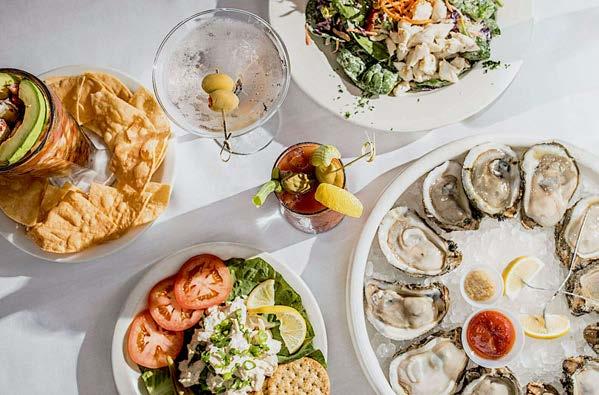

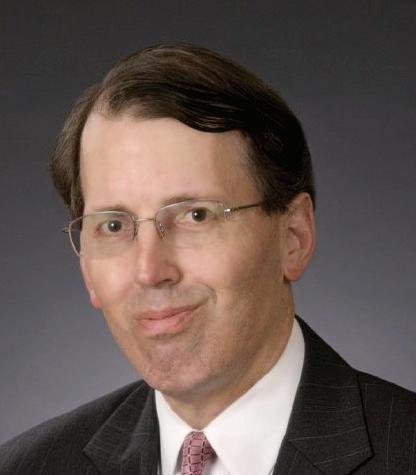
By Evans Attwell Senior Vice President Frost Bank
Ever wonder how some families seem to stay wealthy forever, generation after generation? It’s not just luck, and it’s not because their vast fortunes are inexhaustible. It is the result of purposeful estate planning and ongoing financial management. On the other hand, families that fail to plan may be surprised by how quickly their substantial wealth can be eaten away by taxes, poor investments or extravagant spending.
If you have a sizeable estate to pass down, a thorough and strategic wealth preservation plan can give your heirs the purpose, knowledge, tools and support they need to sustain the family’s resources many years into the future. What might that plan entail? Consider these five steps:
Think about everything your considerable wealth makes possible—for you, your children and future gener-
ations. How could they leverage the opportunity to remain financially independent while contributing to a greater purpose? Consider crafting a family mission statement that spells out your values and long-term vision.
Bringing your vision to life will take thoughtful financial analysis and practical solutions. This will include a combination of a portfolio review, cash flow and spending projections,
investment planning and tax avoidance strategies. Additionally, you may need various entities created to establish guardrails for your heirs, ensuring your wishes are carried out after you’re gone.
Don’t keep your plans a secret. Rather, help your family understand and embrace your long-term vision and values. Letting them know what to expect when you pass on can facilitate a smooth transition and prevent divisive family squabbles.
More than just telling them the rules, get your heirs involved in the process of preserving the family legacy while encouraging them to make their own mark on the world. This might start with educating young
heirs on the tenets of financial management, and perhaps later assigning them duties within the family office.
Wealth preservation isn’t a set-itand-forget-it endeavor. To remain effective through generations, your plan should be reviewed and updated periodically, requiring input from your trusted advisors such as professional money managers, CPAs and
attorneys. Continuous refinement of the plan should be a stipulation that lives on after your departure.
Understandably, the thought of crafting such a far-reaching plan can seem overwhelming. That’s why our Frost Family Legacy Services team is here to ask the right questions and bring together the best resources to help preserve your wealth in perpetuity and ensure your legacy endures for generations to come.
Would you like to talk to a financial professional?
Contact Evans at 713.388.1367 or evans.attwell@frostbank.com.
Investment management services and trust services are offered through Frost Wealth Advisors of Frost Bank. Investment and insurance products are not FDIC insured, are not bank guaranteed, and may lose value. Brokerage services offered through Frost Brokerage Services, Inc., Member FINRA/ SIPC, and investment advisory services offered through Frost Investment Services, LLC, a registered investment adviser. Both companies are subsidiaries of Frost Bank. Additionally, insurance products are offered through Frost Insurance. Deposit and loan products are offered through Frost Bank, Member FDIC.
Frost does not provide legal or tax advice. Please seek legal or tax advice from legal and/or tax professionals.

Get the best of both worlds with online banking, mobile banking, 1,700+ ATMs and a banker who answers the phone when you call.
Visit us at 2604 Westheimer Rd or call (713) 388-1059.

The Mission of Yahweh Annual Miracles of the Mission had more than 250 guests that filled the Junior League of Houston to hear guest speaker Alan Graham, the visionary Founder and CEO of Mobile Loaves & Fishes.
Emcee Johnny Bravo led the charge in welcoming guests to a riveting luncheon filled with tales of courage and resilience as Graham shared the miracles that have unfolded in his experience extending a helping hand to those in need.
With unwavering commitment, Graham shared stories of sustainable solutions for the chronically homeless, infusing their lives with compassion, love, and dignity. Joining Graham on stage was Angela, one of the Mission’s residents, who shared the life-changing impact the services of the Mission had in helping her get back on her feet from living in her car and contemplating suicide to a safe place in which she rebuilt her family relationships and life.
The Mission of Yahweh’s Executive Director Richard Hill announced his retirement after 25 years serving Houston nonprofit organizations that serve the homeless, including 13 years with the Mission following many years in corporate organizations. Hill was honored for his longtime leadership and service to the organization.
Since 1961, the Mission of Yahweh has helped thousands of women and children by providing emergency shelter in a nurturing faith-based environment while providing programs and support to help them become more independent and lead productive, successful lives.
For more information, please visit https://missionofyahweh.org.

